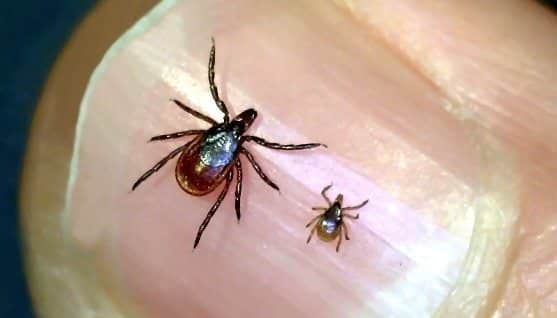

The first concluded that Lyme could be transmitted in as little as 16 hours, while the later study’s findings showed that a tick must be attached and feeding for “at least 48 hours or more” to transmit Lyme. (2011 & 2017) presented two very different findings. The two most recent and largest studies done in the U.S. This timeframe is the average amount of time needed to transmit the Lyme spirochete however, there have been a number of studies that have presented different findings. If the tick is infected, on average it must be attached and feeding for 24-48 hours before it transmits Lyme disease. In order to spread disease to a human or animal, first a tick needs to be infected with the pathogen and it needs to be attached and feeding for a certain amount of time. They are relatively slow feeders and will usually feed for 3-5 days at a time.
DEER TICK VS DOG TICK SKIN
Host immunity and grooming activity may affect mortality.īlacklegged Deer ticks feed on blood by inserting their mouth parts into the skin of a host animal such as a mouse, dog, bird, or even human. Due to their low probability of finding a host, starvation is a major mortality factor of ticks. Density-independent factors causing tick mortality include a range of adverse climatic and microclimate conditions, which can influence temperature and humidity and have the greatest impact on tick survival. Tick death is caused by density-dependent factors such as parasites, pathogens, and predators, all of which appear to have little impact on tick populations. Beginning in May, engorged adult females typically lay between 1000 to 3000 eggs on the forest floor at the site where they detached from their hosts. Adult female ticks feed for five to seven days while the male tick feeds only sparingly, if at all.Īdult ticks feed on large mammals, primarily upon white-tailed deer ( Odocoileus virginianus). In a similar manner, engorged nymphs detach and drop to the forest floor where they molt into the adult stage, which becomes active in October.Īdult ticks remain active through the winter on days when the ground and ambient temperatures are above freezing. In May, larvae molt into nymphs, which feed on a number of hosts for three to four days. Peak larval activity occurs in August, when larvae attach and feed on a wide range of mammals and birds, primarily on white-footed mice ( Peromyscus leucopus).Īfter feeding for three to five days, engorged larvae drop from the host to the ground where they overwinter. In June and July, eggs deposited earlier in the spring hatch into tiny six-legged larvae. Ixodes scapularis is a three-host tick each mobile stage feeds on a different host animal.


 0 kommentar(er)
0 kommentar(er)
